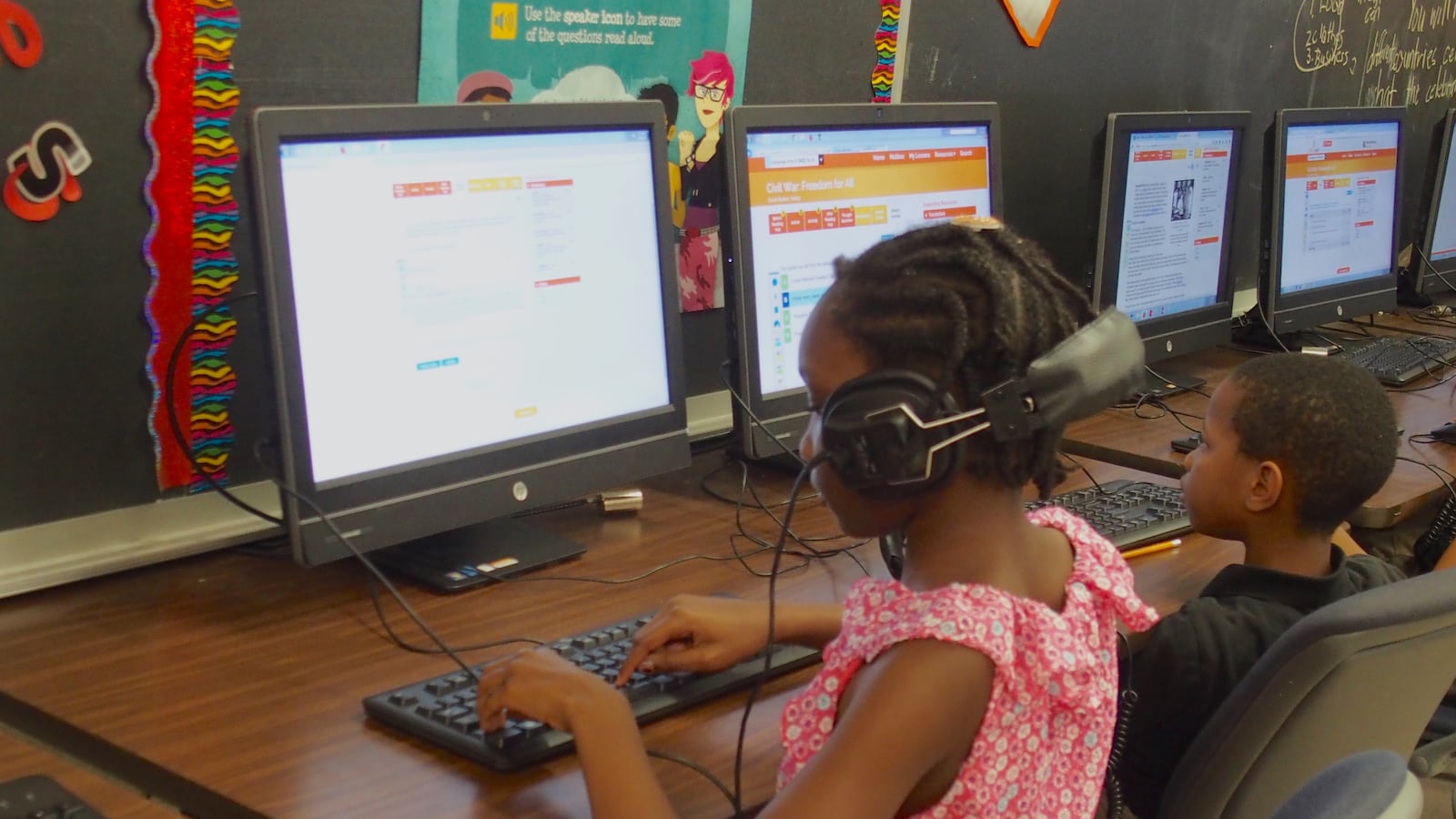The New York City education department is drawing up plans for virtual learning in case schools close to try to curb the spread of the new coronavirus.
That is no easy task, given the deep inequities in students’ and schools’ access to the necessary technology. Still, there are steps that schools can take to make the transition to virtual learning a little smoother — and they need to start planning now, experts say.
So far, Mayor Bill de Blasio has been extremely reluctant to cancel classes, noting the burden that would place on families.
“The DOE is preparing options for online learning, but it is not our preference,” the mayor said at a press conference on Wednesday.
The education department hasn’t said much about what schools are doing to get ready. United Federation of Teachers President Michael Mulgrew told Chalkbeat the city is trying to develop a platform where schools could upload lessons. It would be an online resource that parents could tap for lessons and exercises to do at home, he said.
“We’re definitely working on what we could call a continuing learning plan for each school,” he said.
Live classes streamed online are probably unlikely, given that many students may lack access to reliable internet or computers at home.
“Lack of equity in our city causes all sorts of problems,” Mulgrew said.
Were New York City schools to move to remote learning, each school’s situation and the kinds of students they serve would necessarily guide what’s doable. Pre-K and other early childhood classrooms can’t be replicated on a screen, for example, and students with disabilities may require supports that aren’t possible to deliver virtually.
“It’s going to be highly contextual. It might be really difficult to say, ‘Everyone is going to do this one thing.’ It might be more like a buffet,” said Detra Price-Dennis, an associate professor at Columbia University’s Teachers College, who is focused on digital learning and digital literacy in K-8 classrooms.
Getting ready for the possibility of remote learning starts with communication, she said. First, schools should survey families to learn how they might be able to communicate if their daily routines change — like if school is canceled and parents have to stay home from work. Some might only have access to email while they’re at the office, for example.
Surveys should also include questions about what technology students have access to at home, including whether they can connect to the internet, and the types and age of devices that students have. Knowing that will help school leaders decide which tools and programs might be compatible with Windows versus an Apple product.
Schools should also be looking at their own supplies to determine whether they can help students get connected at home. That could mean lending laptops or devices that provide an internet connection to students who don’t have that technology.
In the classroom, teachers should introduce the devices and platforms that students might be expected to use at home, and think about ways to provide troubleshooting and tech support — especially in cases where children may not have the help of family members.
Most importantly, Price-Dennis said, educators need to incorporate ways to assess whether students are understanding the content.
“The whole point here is learning, and if we keep focusing on, ‘It’s online,’ I think people might just sit in front of a screen and just lecture at kids,” she said.
For many, online instruction may not be possible because of all the resources it requires. More than 917,000 households, or 29%, lack broadband digital access, according to 2017 data from New York City’s comptroller’s office. That affects about 2.2 million New Yorkers.
Especially in schools serving many homeless students, educators may have to do things the old-fashioned way: using phone calls or printed materials.
Schools might consider dropping off worksheets at shelters and providing ways for students to connect with teachers and staff, said Amy Stuart Wells, a professor at Teachers College, who focuses on racial equity issues in education.
“Those relationships are important,” she said. Students and families might appreciate “a place that they could come get food, get materials, ask questions about something they didn’t understand at home, maybe get a little praise or a sticker for something they did well.”
At SAR Academy High School, a private religious school in the Bronx, school leaders have tried to maintain a sense of community after moving classes online. The school closed its doors last week, one of the first in New York City to do so after a student was confirmed to have the coronavirus. (Dozens of students and staff have since been diagnosed with the virus.)
Lili Pitkowsky, a 16-year-old junior at SAR, said there have been schoolwide events like virtual cooking classes and chemistry experiments using kitchen materials.
“What I’ve been most impressed with is, every day our school has done something fun online to participate in so we’re not bored at home,” she said.
She is taking classes online until at least March 26. Not everyone enjoys the shift: one of her friends is dealing with migraines triggered by looking at a screen for a good part of the day.
But Lili is looking on the upside: Before remote learning, she used to leave her home by 6:45 a.m. to get to class on time. Now she doesn’t have to log into a video call until 10 a.m., which means more sleep and a shorter school day. Plus she finds it easier to focus and feels a greater personal responsibility for learning the content.
Instead of using a smartboard, her teachers just screen-share documents while chatting on the conferencing platform Zoom, and break up the class into smaller groups to do group work online.
“I was really skeptical in the beginning because I really do not like the idea of being on a screen for that long,” Lili said. “But I’ve found we’ve been really productive.”
Alex Zimmerman contributed reporting.

